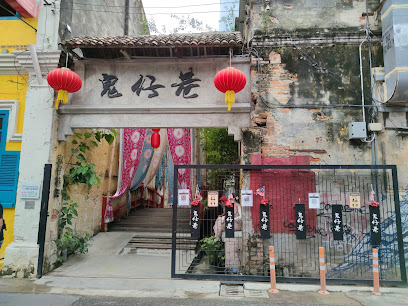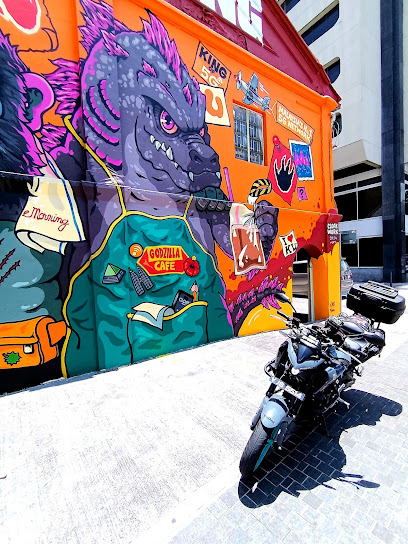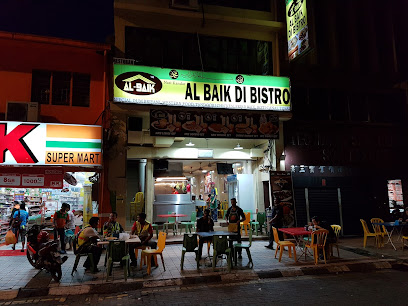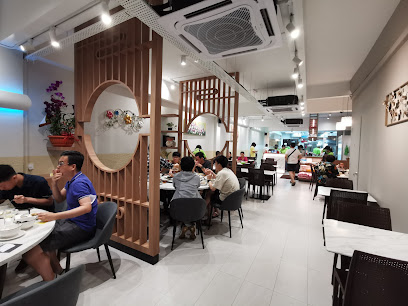
Discover the Vibrant Heart of Chinatown in Kuala Lumpur
Explore Kuala Lumpur's Chinatown: A vibrant blend of history, culture, and culinary delights in the heart of the city.
Chinatown in Kuala Lumpur is a bustling enclave that offers a unique blend of old-world charm and modern vibrancy. Known for its colorful streets, this neighborhood is a haven for history buffs, food lovers, and bargain hunters alike. The area is rich with heritage buildings and temples, standing as a testament to the Chinese immigrants who settled here over a century ago. Walking through the streets, you'll find a variety of shops selling everything from traditional Chinese herbs to trendy fashion items. Food is an integral part of the Chinatown experience. The aroma of street food wafts through the air, tempting you with local delights such as Char Kway Teow, Hainanese Chicken Rice, and the famous Petaling Street noodles. Numerous food stalls and hawker centers offer an authentic taste of Malaysian-Chinese cuisine. Don't miss out on the fresh fruit stalls where you can try exotic fruits like durian and rambutan. Cultural landmarks are in abundance here. Visit the Sri Mahamariamman Temple, Kuala Lumpur's oldest Hindu temple, or the beautiful Guan Di Temple dedicated to the Chinese God of War. The Central Market, just a short walk away, is a treasure trove of local handicrafts and art, perfect for picking up souvenirs. At night, Chinatown transforms into a lively market with vendors selling a variety of goods under twinkling fairy lights, making it an ideal spot for an evening stroll.
Local tips in Chinatown
- Visit early in the morning to avoid the crowds and experience the neighborhood coming to life.
- Carry some cash as many street vendors and small shops do not accept credit cards.
- Bargaining is common in the markets; don't hesitate to negotiate for a better price.
- Wear comfortable shoes as you'll be doing a lot of walking on uneven pavements.
Discover the Vibrant Heart of Chinatown in Kuala Lumpur
Chinatown in Kuala Lumpur is a bustling enclave that offers a unique blend of old-world charm and modern vibrancy. Known for its colorful streets, this neighborhood is a haven for history buffs, food lovers, and bargain hunters alike. The area is rich with heritage buildings and temples, standing as a testament to the Chinese immigrants who settled here over a century ago. Walking through the streets, you'll find a variety of shops selling everything from traditional Chinese herbs to trendy fashion items. Food is an integral part of the Chinatown experience. The aroma of street food wafts through the air, tempting you with local delights such as Char Kway Teow, Hainanese Chicken Rice, and the famous Petaling Street noodles. Numerous food stalls and hawker centers offer an authentic taste of Malaysian-Chinese cuisine. Don't miss out on the fresh fruit stalls where you can try exotic fruits like durian and rambutan. Cultural landmarks are in abundance here. Visit the Sri Mahamariamman Temple, Kuala Lumpur's oldest Hindu temple, or the beautiful Guan Di Temple dedicated to the Chinese God of War. The Central Market, just a short walk away, is a treasure trove of local handicrafts and art, perfect for picking up souvenirs. At night, Chinatown transforms into a lively market with vendors selling a variety of goods under twinkling fairy lights, making it an ideal spot for an evening stroll.
Iconic landmarks you can’t miss
Kwai Chai Hong
Discover the enchanting murals and historical charm of Kwai Chai Hong, a vibrant alleyway in Kuala Lumpur, perfect for exploration and photography.

Guan Di Temple Chinatown
Experience the tranquil beauty and rich cultural heritage of Guan Di Temple, a must-visit Taoist temple in Kuala Lumpur's vibrant Chinatown.

Chan She Shu Yuen Clan Ancestral Hall
Explore the rich cultural heritage and intricate architecture of Chan She Shu Yuen Clan Ancestral Hall in the heart of Kuala Lumpur.

Victoria Fountain
Discover the enchanting Victoria Fountain in Kuala Lumpur City Centre, a stunning historical landmark surrounded by iconic architecture and lush gardens.

Medan Pasar Clock Tower (Old Market Square Clock Tower)
Explore the Medan Pasar Clock Tower, a historical gem in Kuala Lumpur showcasing stunning architecture and vibrant local culture.

Dataran Medan Pasar
Explore Dataran Medan Pasar, a historical landmark in Kuala Lumpur, rich in culture, architecture, and local flavors for an authentic Malaysian experience.

Lorong Petaling 2 - Old Kuala Lumpur Street Art
Explore the vibrant street art of Lorong Petaling 2 in Kuala Lumpur, where creativity and local culture unite in a breathtaking display.

China town KL
Experience the rich culture and tantalizing flavors of Chinatown in Kuala Lumpur, a vibrant hub of food, shopping, and heritage.

Old Kuala Lumpur River of Life Mural
Explore the vibrant stories of Kuala Lumpur at the stunning Old Kuala Lumpur River of Life Mural, a cultural gem along the riverbank.

Petaling Street Storyeum
Discover Kuala Lumpur's vibrant history and culture at Petaling Street Storyeum, a local history museum filled with immersive exhibits and engaging narratives.

Unmissable attractions to see
Central Market
Explore Central Market, a vibrant cultural hub in Kuala Lumpur, where shopping, art, and authentic Malaysian cuisine come together in one historic landmark.

Sultan Abdul Samad Building
Explore the majestic Sultan Abdul Samad Building, a historic landmark in Kuala Lumpur showcasing stunning Moorish architecture and rich cultural heritage.

Kwai Chai Hong
Explore Kwai Chai Hong, a historical and artistic enclave in Kuala Lumpur, showcasing vibrant murals and rich cultural heritage.

Chan She Shu Yuen Clan Ancestral Hall
Discover the cultural heritage of Kuala Lumpur at Chan She Shu Yuen Clan Ancestral Hall, a historical treasure trove showcasing Chinese traditions.

Kolam Biru
Experience the serene beauty of Kolam Biru, Kuala Lumpur's enchanting waterscape in the heart of the city, where nature meets urban charm.

Roku Gin
Experience the art of Japanese craftsmanship at Roku Gin, a premier destination for gin enthusiasts in the heart of Kuala Lumpur.

Godzilla x Kong Mural
Explore the vibrant Godzilla x Kong Mural in Kuala Lumpur, a stunning street art tribute that captures pop culture and creativity in the heart of the city.

Cultural walk
Experience the heart of Kuala Lumpur through its Cultural Walk, where history, culture, and vibrant city life converge in a memorable journey.

Essential places to dine
Al-Baik Di Bistro Restaurant
Experience a delightful fusion of Indian, Malay, and Western cuisines at Al-Baik Di Bistro in Kuala Lumpur's vibrant city center.

Restoran Yusoof dan Zakhir
Experience authentic Indian Muslim cuisine at Restoran Yusoof dan Zakhir in Kuala Lumpur's vibrant city center.

Chocha Foodstore
Discover Chocha Foodstore in Kuala Lumpur: A vibrant blend of Asian fusion cuisine with a lively cocktail and wine bar experience.

Gerai Makanan Sai Kee
Experience authentic Malaysian cuisine at Gerai Makanan Sai Kee in Kuala Lumpur's lively culinary scene.

Dodoo KL
Savor authentic Malaysian cuisine at Dodoo KL, where every dish tells a story and every bite is an adventure.

Restoran Han Kee
Experience authentic Chinese flavors at Restoran Han Kee in Kuala Lumpur's vibrant City Centre, where culinary traditions come alive.

Voilà | Meat Free Restaurant - Chinatown KL Petaling Streets Vegetarian
Discover the vibrant flavors of vegetarian cuisine at Voilà in Chinatown KL – where every dish tells a story!

Ginger Restaurant
Discover the vibrant tastes of Thailand at Ginger Restaurant in Kuala Lumpur's City Centre – a haven for Thai cuisine enthusiasts.

Yooi Kee Chee Cheong Fun & Porridge
Experience authentic Malaysian flavors at Yooi Kee Chee Cheong Fun & Porridge in Kuala Lumpur's bustling Tang City Food Court.

Loke Yuen Restaurant
Discover authentic Malaysian flavors at Loke Yuen Restaurant in Kuala Lumpur City Centre—where tradition meets culinary artistry.

Markets, malls and hidden boutiques
Central Market
Experience the vibrant cultural hub of Central Market in Kuala Lumpur, where art, history, and delicious cuisine intertwine in a lively atmosphere.

The APOM Store @ Central Market
Discover unique Malaysian gifts and souvenirs at The APOM Store in Central Market, a vibrant hub of culture and craftsmanship in Kuala Lumpur.

In The Attic
Explore In The Attic, a vintage clothing store in Kuala Lumpur, where each piece is a unique find waiting to be discovered.

Kl Grand Bazaar
Explore KL Grand Bazaar, a vibrant shopping destination in Kuala Lumpur offering unique gifts, clothing, and handicrafts for every traveler.

Happy Planet Trading
Explore Happy Planet Trading, your go-to gift shop in Kuala Lumpur for unique souvenirs and festive treasures that celebrate Malaysian culture.

KL Souvenirs
Explore KL Souvenirs for unique Malaysian crafts and keepsakes that reflect the rich heritage of Kuala Lumpur's vibrant culture.

LT Mixed Antique
Explore LT Mixed Antique in Kuala Lumpur's Central Market for unique souvenirs and local crafts that embody Malaysia's rich cultural heritage.

Hiro One Way Ticket
Explore the vibrant Hiro One Way Ticket in Kuala Lumpur's Chinatown for unique gifts, delicious chocolates, and memorable souvenirs.

Idol Enterprise
Explore Idol Enterprise in Kuala Lumpur for unique gifts and souvenirs that embody the spirit of Malaysia's rich culture and artistry.

Native Gallery Sdn Bhd
Discover the Authentic Essence of Malaysia at Native Gallery Sdn Bhd - Your Destination for Unique Gifts and Antiques in Kuala Lumpur.

Essential bars & hidden hideouts
PS150
Discover the vibrant nightlife of Kuala Lumpur at PS150, where innovative cocktails and a lively atmosphere create unforgettable experiences.

The Attic Bar
Experience Kuala Lumpur's nightlife at The Attic Bar, where stunning views and exquisite cocktails await in a cozy atmosphere.

Concubine KL
Discover the vibrant nightlife at Concubine KL, where creative cocktails and a lively atmosphere await in the heart of Kuala Lumpur.

Crane Upstairs KL
Experience the best of Kuala Lumpur's nightlife at Crane Upstairs KL, a stylish rooftop bar offering exquisite cocktails and stunning skyline views.

ShuangXi
Discover the vibrant nightlife of Kuala Lumpur at ShuangXi, offering unique cocktails and a cozy atmosphere for an unforgettable experience.

Her House KL
Discover the vibrant nightlife of Kuala Lumpur at Her House KL, where unique cocktails and a lively atmosphere await.

G-String KL
Experience the vibrant nightlife at G-String KL, a cocktail bar offering unique drinks and a lively atmosphere in the heart of Kuala Lumpur.

Botakliquor Bar
Experience the vibrant nightlife of Kuala Lumpur at Botakliquor Bar, offering innovative cocktails and a lively atmosphere in the heart of the city.

Baijiu KL
Discover the vibrant nightlife at Baijiu KL, where unique cocktails and a lively atmosphere await in the heart of Kuala Lumpur.

Cock’s Tail Bar
Discover the vibrant nightlife at Cock’s Tail Bar in Kuala Lumpur, where unique cocktails and lively ambiance await every visitor.

Local Phrases
-
- Hello你好
[Nǐ hǎo] - Goodbye再见
[Zài jiàn] - Yes是的
[Shì de] - No不
[Bù] - Please/You're welcome请
[Qǐng] - Thank you谢谢
[Xièxiè] - Excuse me/Sorry对不起
[Duìbùqǐ] - How are you?你好吗?
[Nǐ hǎo ma?] - Fine. And you?很好。你呢?
[Hěn hǎo. Nǐ ne?] - Do you speak English?你会说英语吗?
[Nǐ huì shuō yīngyǔ ma?] - I don't understand我不明白
[Wǒ bù míngbái]
- Hello你好
-
- I'd like to see the menu, please我想看菜单,请
[Wǒ xiǎng kàn càidān, qǐng] - I don't eat meat我不吃肉
[Wǒ bù chī ròu] - Cheers!干杯!
[Gānbēi!] - I would like to pay, please我想付款,请
[Wǒ xiǎng fùkuǎn, qǐng]
- I'd like to see the menu, please我想看菜单,请
-
- Help!救命!
[Jiùmìng!] - Go away!走开!
[Zǒu kāi!] - Call the Police!叫警察!
[Jiào jǐngchá!] - Call a doctor!叫医生!
[Jiào yīshēng!] - I'm lost我迷路了
[Wǒ mílù le] - I'm ill我不舒服
[Wǒ bù shūfú]
- Help!救命!
-
- I'd like to buy...我想买...
[Wǒ xiǎng mǎi...] - I'm just looking我只是看看
[Wǒ zhǐshì kàn kàn] - How much is it?多少钱?
[Duōshǎo qián?] - That's too expensive太贵了
[Tài guì le] - Can you lower the price?可以便宜一点吗?
[Kěyǐ piányi yīdiǎn ma?]
- I'd like to buy...我想买...
-
- What time is it?现在几点了?
[Xiànzài jǐ diǎn le?] - It's one o'clock现在一点
[Xiànzài yī diǎn] - Half past (10)十点半
[Shí diǎn bàn] - Morning早上
[Zǎoshang] - Afternoon下午
[Xiàwǔ] - Evening晚上
[Wǎnshang] - Yesterday昨天
[Zuótiān] - Today今天
[Jīntiān] - Tomorrow明天
[Míngtiān] - 1一
[Yī] - 2二
[Èr] - 3三
[Sān] - 4四
[Sì] - 5五
[Wǔ] - 6六
[Liù] - 7七
[Qī] - 8八
[Bā] - 9九
[Jiǔ] - 10十
[Shí]
- What time is it?现在几点了?
-
- Where's a/the...?...在哪里?
[...Zài nǎlǐ?] - What's the address?地址是什么?
[Dìzhǐ shì shénme?] - Can you show me (on the map)?你可以给我看(地图)吗?
[Nǐ kěyǐ gěi wǒ kàn (dìtú) ma?] - When's the next (bus)?下一班(公共汽车)是什么时候?
[Xià yī bān (gōnggòng qìchē) shì shénme shíhòu?] - A ticket (to ....)一张票(去...)
[Yī zhāng piào (qù...)]
- Where's a/the...?...在哪里?
History of Chinatown
-
Chinatown in Kuala Lumpur, known as 'Petaling Street,' emerged in the 1850s when the area was founded as a mining settlement. Chinese immigrants, primarily from the Guangdong and Fujian provinces, flocked to the region to work in tin mining, catalyzing the establishment of the city itself. As the tin mining industry flourished, so did the cultural and commercial significance of Chinatown within Kuala Lumpur.
-
Throughout the late 19th and early 20th centuries, Chinatown became a vibrant cultural hub, showcasing a mix of Chinese dialects, customs, and traditions. The establishment of Chinese clan associations, such as the Cantonese and Hokkien, played a pivotal role in providing social support, education, and community leadership, fostering a sense of belonging among the Chinese immigrants.
-
The Japanese occupation of Malaya from 1942 to 1945 had a profound impact on Chinatown. The local Chinese population faced persecution, and many were forced into forced labor camps. Despite the challenges, the resilience of the community shone through as they organized resistance against the occupiers and continued to support each other during this turbulent time.
-
Following World War II, Chinatown underwent significant revitalization. The economy rebounded, leading to the establishment of numerous businesses, hawker stalls, and markets that defined the area. Petaling Street became synonymous with trade and commerce, attracting both locals and tourists eager to experience the rich tapestry of Chinese culture through food, arts, and crafts.
-
In recent decades, efforts have been made to preserve the cultural heritage of Chinatown amid rapid urban development. The area has been designated as a heritage site, ensuring that its historical architecture, such as the Sri Mahamariamman Temple and the iconic Central Market, is protected. Today, Chinatown remains a bustling district that celebrates its historical roots while adapting to contemporary influences, making it a must-visit destination in Kuala Lumpur.
Chinatown Essentials
-
Chinatown is easily accessible from various neighborhoods in Kuala Lumpur. From Bukit Bintang, take the MRT to Pasar Seni station, which is a short walk to Chinatown. If you're coming from KL Sentral, you can take the KTM Komuter to the same Pasar Seni station. Buses are also available, including the Go KL City Bus, which has a route that stops at Chinatown. Taxis and ride-hailing services like Grab are convenient options as well.
-
Chinatown is a pedestrian-friendly area, making it easy to explore on foot. The main streets, such as Petaling Street, are lined with shops and stalls. For longer distances, you can use the LRT or MRT systems, with nearby stations like Pasar Seni and Masjid Jamek. Bicycles can also be rented from various bike-sharing services, providing an enjoyable way to see the area at your own pace.
-
Chinatown is generally safe for tourists, but standard precautions should be taken. Avoid walking alone at night in less crowded areas. Petaling Street can be crowded with vendors and tourists, so keep an eye on your belongings. Be cautious in alleyways and avoid poorly lit areas. It's advisable to stay alert in areas where pickpocketing can occur, especially during busy market hours.
-
In case of an emergency, dial 999 for police, fire, or medical assistance. There are several hospitals and clinics in and around Chinatown, such as Tung Shin Hospital. It is recommended to have travel insurance that covers medical emergencies. For non-emergency medical issues, local pharmacies can provide over-the-counter medications.
-
Fashion: Do wear comfortable clothing suitable for the hot and humid climate. Don't wear overly revealing clothing, especially when visiting temples. Religion: Do respect local customs and traditions; always remove your shoes when entering a temple. Don't take photos in places where it's prohibited. Public Transport: Do give up your seat for the elderly and disabled. Don't engage in loud conversations or eat on public transport. Greetings: Do greet locals with a smile and a polite 'hello.' Don't be overly familiar unless invited. Eating & Drinking: Do try local street food, but ensure it's from a clean stall. Don't drink tap water; always opt for bottled water.
-
To experience Chinatown like a local, visit the bustling markets in the early morning when vendors are setting up. Try the local delicacies like Hokkien Mee and Char Kway Teow at street stalls. Engage with shop owners as they are often eager to share stories about their products. If you're looking for unique souvenirs, explore the smaller alleys for hidden gems away from the main tourist paths. Don't forget to visit the Sri Mahamariamman Temple, one of the oldest Hindu temples in the city, for a glimpse of the local culture.
Trending Landmarks in Chinatown
Nearby Cities to Chinatown
-
Things To Do in Malacca
-
Things To Do in Cameron Highlands
-
Things To Do in Ipoh
-
Things To Do in Kuantan
-
Things To Do in Penang
-
Things To Do in Kuala Terengganu
-
Things To Do in George Town
-
Things To Do in Johor Bahru
-
Things To Do in Jurong
-
Things To Do in Sembawang
-
Things To Do in Yishun
-
Things To Do in Singapore
-
Things To Do in Bukit Timah
-
Things To Do in Orchard Road
-
Things To Do in Little India













